
How to Grow Plants in Raised Beds
Raised beds are fantastic for those with heavy clay soil and will take the bending out of gardening! They drain well and will warm up much faster in the spring, giving you earlier crops.
How to Grow Plants in Raised Beds
Raised beds are fantastic for those with heavy clay soil and will take the bending out of gardening! They drain well and will warm up much faster in the spring, giving you earlier crops.
Raised garden beds can be used to grow both flowers and vegetables. They are fantastic for those with heavy clay soil and also take the bending out of gardening! They drain well and will warm up much faster in the spring, giving you earlier crops.
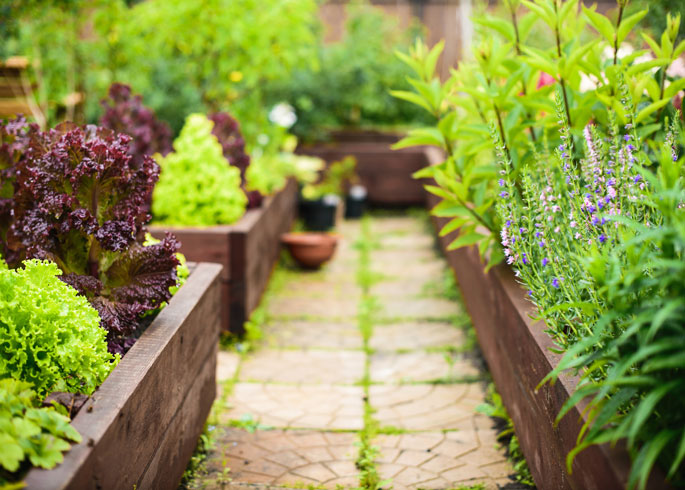
The benefits of raised beds
Aside from the pleasing visual effects of garden raised beds, some of the other advantages to raised bed gardening include:
- Being able to choose the type of soil you place in your raised beds - this is particularly useful for growing ericaceous (lime-hating) plants such as Azaleas, Camelia and Heather.
- Good drainage and warmer soil early on in the spring.
- Prevention of soil compaction as you do not need to walk on the soil surface in order to maintain your plants.
- Easier access
- Raised beds have a bigger soil volume than containers so require less watering.
- They are easy to cover with netting or fleece so crops can be protected and the cropping season can be extended.
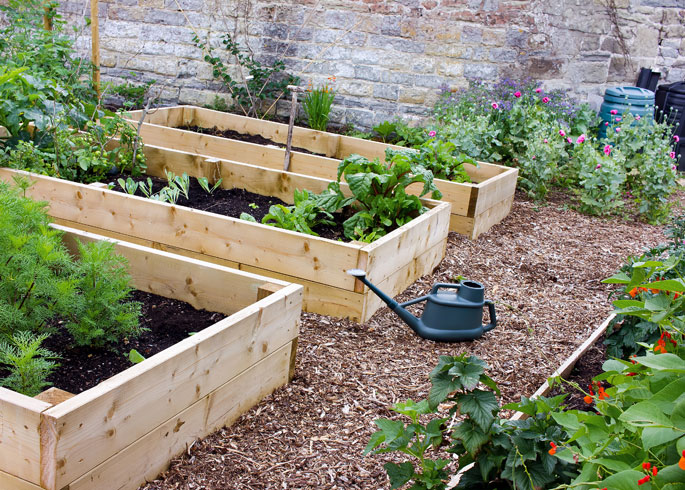
Materials for making raised beds
The first consideration when building a raised bed is what materials are available to you. Ideal materials for building a raised bed include railway sleepers, wooden boards (including old scaffold boards, treated or untreated), sawn logs, bricks, natural stone, or cement blocks.
If you decide to use railway sleepers or scrap wood, be careful that the wood hasnt been treated with a toxic preservative (modern wood treatments are safe). If this is the case, the wood will need to be lined with polythene sheeting on the inside to prevent the toxins from harming your plants.
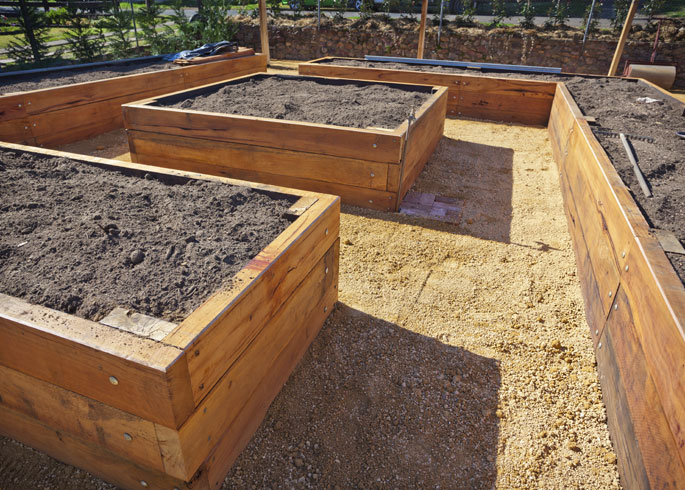
If you are building a raised bed for ericaceous (lime-hating) plants such as Azaleas, Camellia, Pieris or Heather, be aware that the mortar from brick or stone walls will leach lime into the soil, turning it alkaline over time. Lining the bed with polythene will prevent this from happening.
When choosing a material for making a raised bed, take into consideration the ease of construction. Raised beds built from brick, stone or concrete blocks are tricky to construct but are long-lasting and durable. Wooden raised beds are generally quicker and easier to construct and can be removed easily in future years.
What size should I make my raised bed?
When you build a raised bed, make sure the entire soil surface is within arm's reach from the edge without having to step on to the soil. If the bed is accessible from all sides then an ideal width is about 1.2m (4ft), but this can be varied according to your needs. If you install paths between your raised beds, make sure they are at least 30cm (12in) wide for walking or 45cm (18in) wide if wheelbarrow access is required.
How to make a raised bed
Before laying your raised bed, dig the existing soil to a spades depth to break it up (unless the bed is being placed on top of a hard surface). Once constructed, fill your raised bed with topsoil and plenty of organic matter such as well-rotted manure, compost or recycled green waste. Spread the soil out evenly so it is level with the top of the boards or bricks. The soil level will drop as it settles.
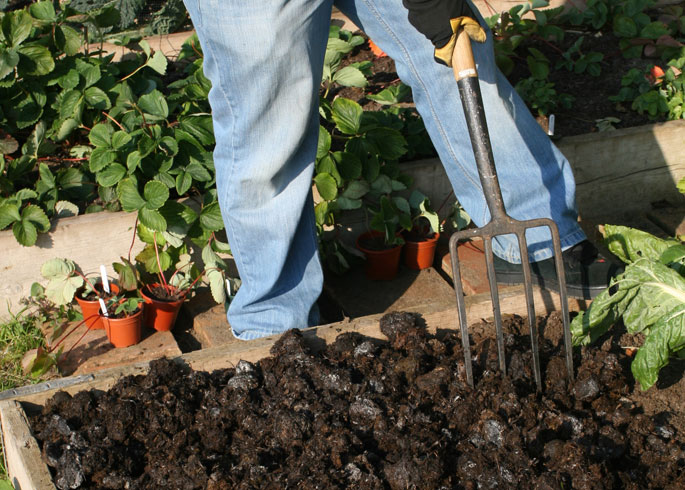
If you're struggling to obtain topsoil try using the soil from your pathways to fill the beds and then fill the paths with gravel or bark chips. If you have had to remove turf in the process of laying your raised bed, place the turf at the bottom of the raised bed before filling it - the turf will add organic matter and nutrients to the soil as it decays.
Plants for raised beds
Most plants, with the exception of large trees and shrubs, can be grown in a raised bed. Raised garden beds are particularly useful for plants that require good drainage such as alpine and Mediterranean plants; and for plants that require specialist soil e.g. ericaceous or lime-hating plants.
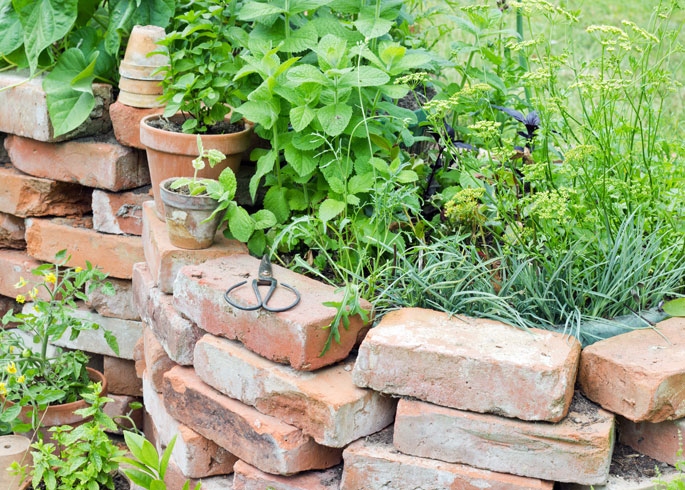
Many alpine plants are small and can be better appreciated when closer to eye level. Herbs work very well in a raised bed as they thrive on the good drainage and are easier to harvest. Raised flower beds are also a good opportunity to have trailing plants which can spill over the edge and soften the feature.
Vegetables and soft fruit such as strawberries, raspberries, blackberries and currants also work well in a raised bed.
Raised vegetable beds
Growing vegetables in a raised bed has many advantages - the soil is free-draining, it warms up faster in the spring so you can enjoy earlier crops, and they are easy to manage. You can add a raised bed cover made of polythene or fleece to extend the cropping season into winter too! Root crops such as carrots and parsnips particularly benefit from the deep and free-draining soil provided in a raised bed, which is beneficial for those with heavy clay soil.
Raised vegetable beds are also an easy way to practise crop rotation. The purpose of crop rotation is to prevent the build-up of soil-borne pests and diseases specific to a group of crops e.g clubroot in Brassicas. The main crop groups include legumes such as peas and beans, Alliums such as onions, garlic and leeks, Brassicas such as cabbage, cauliflower and broccoli, root crops such as carrots and beetroot and plants of the potato family including potatoes and tomatoes.
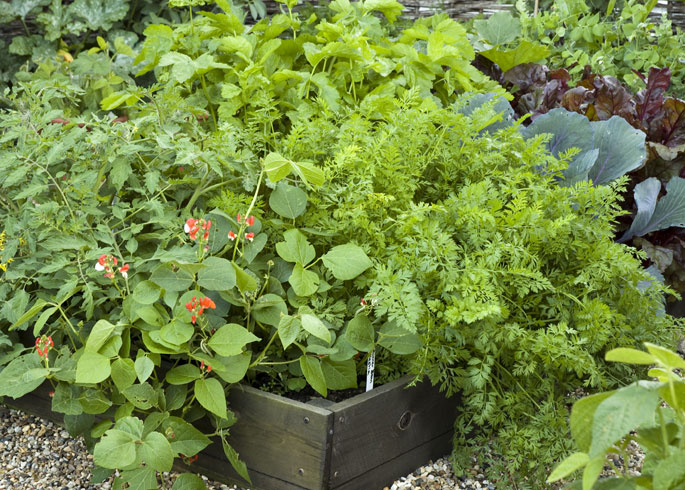
If you have several raised beds, a different group of crops can be grown in each bed every year. In this way you can greatly reduce the risk of a certain pest or disease building up in the soil. Crop rotation can also allow you to make the most of the nutrients in the soil. For example peas and beans fix nitrogen in the soil which could then be available for leafy crops such as Brassicas.
Whatever you decide to grow, raised beds are neat and attractive and will suit a place anywhere in your garden, whether on the patio or in the vegetable plot! Why not find a space for a raised bed in your garden today?

Written by: Sue Sanderson
Plants and gardens have always been a big part of my life. I can remember helping my Dad to prick out seedlings, even before I could see over the top of the potting bench. As an adult, I trained at Writtle College where I received my degree, BSc. (Hons) Horticulture. After working in a specialist plantsman's nursery, and later, as a consulting arboriculturalist, I joined Thompson & Morgan in 2008. Initially looking after the grounds and coordinating the plant trials, I now support the web team offering horticultural advice online.Sign Up For Exclusive Special Offers




© 2024 Thompson & Morgan. All rights reserved. A division of Branded Garden Products Limited.




